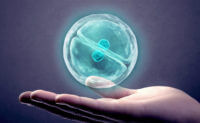STEM CELL THERAPY IN EUROPE
Stem cells have shown tremendous promise for understanding and treating a range of intractable diseases, injuries and other health-related conditions. Clinical trials involving stem cells are underway for many conditions, and each day moves researchers closer to another medical breakthrough.
Stem cells have demonstrated encouraging potential as reparative therapy for patients
The current review summarises the current evidence for use of stem cell therapies. The safety and feasibility of administering different types of stem cell therapies seem to be reasonably proven and all clinical data included in the Global DataBase ClinicalTrials.gov (USA)
We examined the reports of clinical trials in the NIH ClinicalTrials.gov and European databases to classify them by stem cell type and disease application.
We searched for clinical trial data published in peer-reviewed journals and sought out publically available information on trials performed by companies. Data for some studies are regularly published, but for many trials data are unavailable or not easily accessed. Given the relative immaturity of the cell therapy field, it is important to know the outcomes of early clinical trials to help guide others in the processes.
MSCs for Liver Disease and Diabetes
Liver in end stage liver disease (cirrhosis) due to hepatitis B and C and alcoholic and cryptogenic causes showed some response in function as assessed by changes in creatinine, serum albumin, and bilirubin in response to autologous MSCs (El-Ansary et al., 2012, Kharaziha et al., 2009).
The anti-fibrotic effects of autologous MSCs (which were 50 million MSCs administered on two occasions 4 weeks apart) were explored in patients with alcoholic liver cirrhosis (Jang et al., 2014). Improvements in histological liver biopsy samples were observed in 55% patients as well as some change in type-1 collagen and α-smooth muscle actin.
Diabetes
Diabetes is classified into two main types (type 1 and type 2) which both lead to hyperglycemia .
Types of diabetes
- Type 1 Diabetes is the result of a person’s immune system fighting and destroying the b-cells, it usually begins in the early stages of life and accounts for 10% of the total cases of diabetes. People with this type have to take insulin shots daily in order to survive.
- Type 2 Diabetes results from b-cell performance decline and an increase in insulin resistance; this type is linked with genetic factors and obesity, hence this type can be prevented by living a healthy lifestyle.
- There is another type of diabetes that affects pregnant women, it is called Gestational Diabetes where the hormones released by the placenta to sustain the pregnancy, make the pregnant woman’s cells more resistant to insulin. Once the pancreas is unable to overcome the resistance, the patient develops diabetes
Diabetes Stem Cell Treatment
Over the years, there have been attempts to cure diabetes by using methods like replacing b-cells through transplants, by increasing b-cell replication, by reducing the death of b-cells and by deriving new b-cells from other cells.
Autologous Mesenchymal stem cells (MSCs) are self-renewing multipotent cells that have the capacity to secrete multiple biologic factors that can restore and repair injured tissues.
It is known that MSCs play a crucial role in healing damaged tissues. They can differentiate to replace the dead cells as well as secrete stimulant factors to activate surrounding cells in the microenvironment, enhancing the tissue repair process. Therefore, MSCs can be applied to treat tissues impaired by chronic hyperglycemia. MSC transplantation can increase beta cell mass via the following effects:
(1) beta cell replacement through cellular differentiation;
(2) local microenvironment modification by production of cytokines, chemokines and factors to stimulate endogenous regeneration;
(3) reduction or prevention of autoimmunity to beta cells. Immunomodulatory and inflammatory effects of MSCs also contribute to the reduction of insulin resistance.
Results achieved with stem cell therapy
- Significant decrease in fasting blood sugars and the level of Hemoglobin A1C
- Significant decrease in Triglyceride levels
- Measurable improvement in kidney function with a decrease in creatinine levels
Clinical studies are underway using MSCs in patients with diabetes.
Data suggest positive changes in metabolic parameters may occur with intravenous injection MSCs
It is known that MSCs play a crucial role in healing damaged tissues. They can differentiate to replace the dead cells as well as secrete stimulant factors to activate surrounding cells in the microenvironment, enhancing the tissue repair process
The recent progress in regenerative medicine, especially stem cell therapy, has suggested several novel and potential cures for (Diabetes Type 1) T1D. Autologous mesenchymal stem cell (MSC) based cell therapy is among one of them. MSCs are a type of adult stem cells residing in bone marrow, adipose tissue, umbilical cord blood, and many other tissues. MSCs, with self-renewal potential and transdifferentiation capability, can be expanded in vitro and directed to various cell lineages with relatively less efforts. MSCs have well-characterized hypoimmunogenicity and immunomodulatory effect. All these features make MSCs attractive for treating T1D.
For both T1DM and T2DM, autologous MSC transplantation can dramatically improve the blood glucose levels, while reducing the insulin dose and side effects associated with DM. More importantly, both in preclinical trials and clinical trials, autologous MSC transplantation has been demonstrated to be safe; there have been no observed adverse side effects or tumorigenesis. The data thus far have suggested that MSC transplantation is a promising therapy for DM
Efficacy of autologous stem cell transplantation in patients with type 2 diabetes mellitus.
Our observations indicate that SCT is a safe and effective modality of treatment to improve beta-cell function in patients with T2DM.
MSC treatment demonstrated exciting therapeutic effects on glycemic control by restoring islet function and ameliorating insulin resistance
Stem cell therapies in clinical trials in stroke
Osteoarthritis and knee pain
Feasibility and safety were confirmed, and strong indications of clinical efficacy were identified. Patients exhibited rapid and progressive improvement of algofunctional indices that approached 65% to 78% by 1 year. MSC therapy may be a valid alternative treatment for chronic knee osteoarthritis. The intervention is simple, does not require hospitalization or surgery, provides pain relief, and significantly improves cartilage quality.
Intra-articular injection of MSCs in osteoarthritic patients resulted in strong improvement in cartilage coverage and quality in the vast majority of treated cases (Orozco et al., 2013)
Back pain
Patients with severe back pain due to degenerative disc disease improved dramatically, with 71% of optimal efficiency in the improvement of clinical parameters of pain and disability, but without disc height recovery (Orozco et al., 2011).
Mesoblast has also reported the benefits of a single injection of MSCs (6 or 18 million) in a randomized, placebo-controlled phase II study of 100 patients with chronic low back pain due to degenerative disc disease. A single injection of 6 million MSCs gave substantial and sustained pain relief with 48% having no or minimal pain after 24 months compared with only 13% of patients without pain who received saline control injections (Mesoblast, 2015)
Erectile dysfunction
Clinical trial results show that stem cells can restore sufficient erectile function to allow previously impotent men to have spontaneous intercourse. This is the first time stem cell therapy has produced patients who have recovered sufficient erectile function to enable intercourse.
In 2016, Haahr et al from Denmark reported on the safety and potential effect of a stem cells injection of autologous ADSCs
Multiple sclerosis
More than half of patients with multiple sclerosis have progressive disease characterised by accumulating disability. The absence of treatments for progressive multiple sclerosis represents a major unmet clinical need. On the basis of evidence that autologous mesenchymal stem cells have a beneficial effect in acute and chronic animal models of multiple sclerosis, we aimed to assess the safety and efficacy of these cells as a potential neuroprotective treatment for secondary progressive multiple sclerosis.
Autologous autologous mesenchymal stem cells were safely given to patients with secondary progressive multiple sclerosis in our study. The evidence of structural, functional, and physiological improvement after treatment in some visual endpoints is suggestive of neuroprotection.
Stem cell treatment for Lyme disease
Brain, nervous system, heart, circulation, muscles, joints, reproductive system, digestion and skin are some areas of the body that are targeted by chronic Lyme disease. Sometimes symptoms take even years to develop and it is impossible to predict when they might appear. These difficulties are very hard to resolve, leaving a patient in pain and disabled for regular daily activities.
New stem cell therapy is a discovery that is extremely helpful to all the Lyme disease patients whose condition progressed and left them with damage that causes symptoms that cannot be solved.
. They are a part of a repair system and during this procedure they are enriched and their number enlarged, which is why they are able to rebuild damaged areas inside organism more, in a completely natural way, reversing the symptoms of a condition.
Autologous Stem cell therapy is completely safe
Stem cells are undifferentiated cells that are give rise to differentiated cells that make up the building blocks of tissue and organs. Due to their unlimited source and high differentiation potential, autologous stem cells are considered as potentially new therapeutic agents for the treatment.
During past few years a considerable progress in stem cell-based strategies whole body regeneration have been proposed as future clinical therapies.
Currently, most procedures involve injections of stem cells to peripheral blood like a blood transfusions.
When stem cells are infused into the patient, they are administered through an intravenous catheter (IV) just like a blood transfusion.
Pre-Treatment Evaluation
A stem cell specialist will begin the evaluation by reviewing your medical record and history, performing anti-aging treatment he will recommend a treatment plan.
Preadmission Tests
Before being admitted to the clinic, you will have laboratory and other diagnostic tests to determine if you have normal function of the heart, lungs, kidney and liver and that you do not have an undiagnosed infection. Most of these tests will be done as an outpatient before you are admitted to the clinic, but others may need to be completed after you are admitted for treatment.
Stem Cells injections.
When stem cells are infused into the patient, they are administered through an intravenous catheter (IV) or central venous catheter, just like a blood transfusion .
Expectations.
It is expected strengthening the regenerative abilities of the body, improving of all functions of organs and tissues and repairing of pathologically damaged tissues, rejuvenate body.
The approximate maximum of stem cell efficiency is 2 months after injection with the subsequent long-term effect.
Recommendations
It is recommended do not use antibiotics for several weeks after stem cells injections.
It is not recommended to visit sauna for 1-2 weeks, avoid strong physical activity, stresses and any kind of trauma within 2 months after stem cells injections.
Need more details?
Contacts:
 WhatsApp: +447778936902 , +33745637397, +34670491885
WhatsApp: +447778936902 , +33745637397, +34670491885


